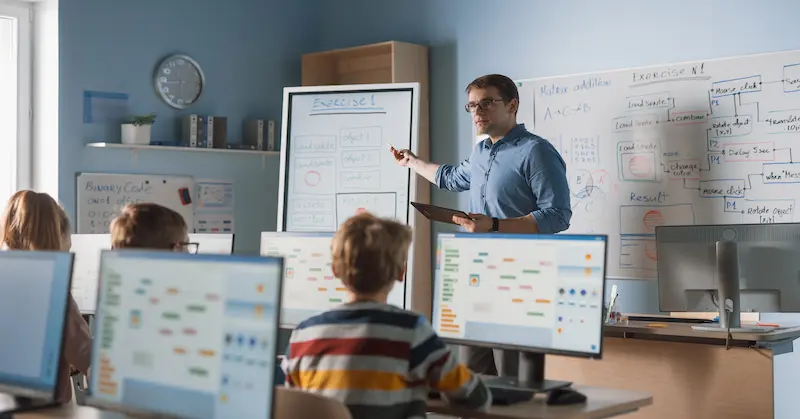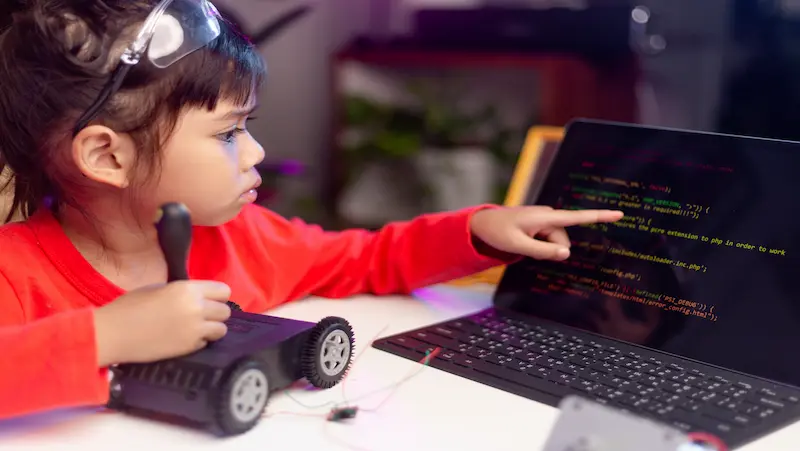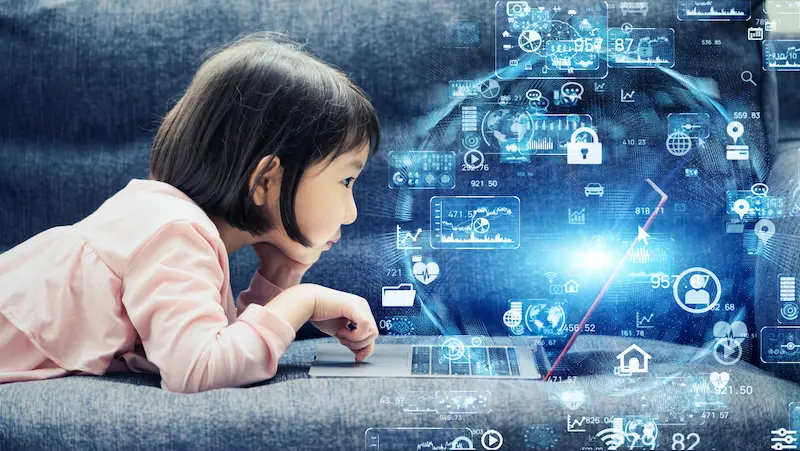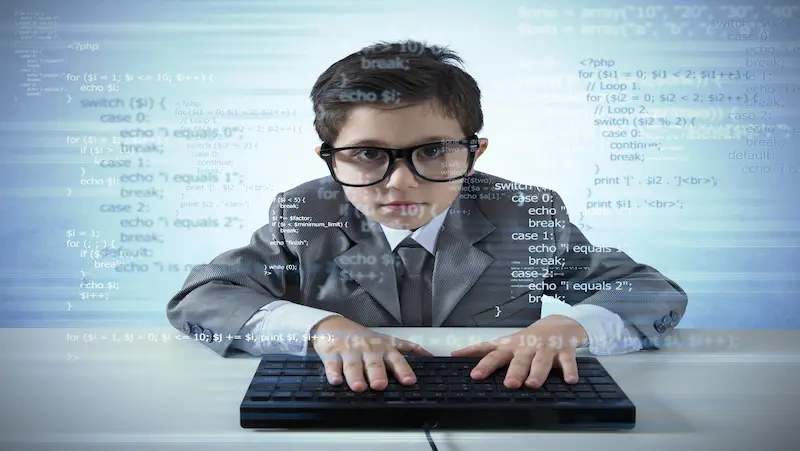In a world where technology weaves through every facet of life, understanding the language of computers is akin to holding a key to the future. But what does it really mean to teach children to code, and why is it so important? Discover how coding can be as intuitive as any language, opening doors to creativity and career opportunities.
In this article, we’ll unveil the captivating journey of introducing young minds to the world of coding. We’ll explore the myriad benefits this skill offers beyond the screen—fostering critical thinking, problem-solving, and creativity. It’s not just about mastering programming languages; it’s about nurturing a mindset that thrives on innovation and digital confidence.
Table of contents
- The Growing Importance of Coding Skills for Children
- Understanding the Basics of Coding
- The Role of Coding in Education
- Best Practices for Teaching Coding
- Coding Tools and Platforms for Kids
- Building a Strong Foundation
- Exploring Real-World Applications
- Overcoming Challenges in Coding Education
- Conclusion
- Frequently Asked Questions (FAQs)
The Growing Importance of Coding Skills for Children

In today’s digital era, coding skills have become increasingly essential for children. The ability to code empowers them to understand and engage with technology, preparing them for the future job market. This article explores why teaching coding matters, the fundamental basics of coding, the role of coding in education, best practices for teaching coding, coding tools and platforms for kids, building a strong foundation in coding, real-world applications of coding, overcoming challenges in coding education, the future of coding education, and concludes with the importance of cultivating coding skills in children. Coding for kids has become an essential skill in today’s tech-driven world, preparing young learners for a future filled with endless opportunities.
Why Teaching Coding Matters: Benefits and Impacts
Teaching coding to children goes beyond just learning how to create programs. It nurtures critical thinking, problem-solving, creativity, and collaboration skills. By learning to code, children develop a growth mindset, where they view challenges as opportunities for learning and innovation. Additionally, coding education has a significant impact on a child’s cognitive development, enhancing logical reasoning and computational thinking abilities.
Understanding the Basics of Coding
What is Coding?
Coding is like giving instructions to a computer so it can do fun and interesting things. Imagine you’re telling your robot buddy how to dance or draw a picture. But instead of using regular words, you use special codes that the computer understands. These codes are like secret handshakes between you and the computer, making it do exactly what you want. So, coding is a cool way to make computers follow your creative ideas and make cool stuff happen!
Popular Coding Languages for Kids
There are several coding languages suitable for kids to start their coding journey. Some popular ones are:
1. Scratch: A visual programming language that uses blocks of code to create interactive stories, games, and animations.
2. Python: Python for kids offers a user-friendly introduction to coding, enabling young learners to develop essential problem-solving skills while having fun with programming.
3. JavaScript: A language used for web development, allowing interaction and dynamic content creation on websites.
Exploring kids coding languages like Scratch and Blockly can spark a lifelong interest in technology and empower young minds to create and innovate through programming.
The Role of Coding in Education

Integrating Coding into School Curriculums
To ensure children have access to coding education, integrating it into school curriculums is crucial. By incorporating coding lessons into various subjects, educators can foster interdisciplinary learning, enabling students to apply coding skills in different contexts.
The Connection Between Coding and Problem-Solving
Coding teaches children to approach problems logically and break them down into smaller, more manageable parts. This computational thinking process enhances problem-solving skills that are applicable to various domains, not just technology-related ones.
Best Practices for Teaching Coding
Creating an Inclusive Coding Environment
Promoting inclusivity in coding education is vital to ensure that all children, regardless of their gender, background, or ability, feel welcome and have equal opportunities. Educators should foster a supportive and inclusive environment that encourages collaboration and celebrates diversity.
The Role of Teachers and Parents
Teachers and parents play crucial roles in supporting children’s coding education. They can facilitate learning opportunities, provide guidance, and encourage exploration and experimentation. Collaboration between educators, parents, and students is key to creating a positive learning experience.
Balancing Screen Time and Other Activities
While coding can be an immersive experience, it is essential to strike a balance between screen time and other activities. Encourage children to engage in physical activities, socialize, and explore other hobbies to ensure a well-rounded development.
Coding Tools and Platforms for Kids
Online Coding Platforms
There are various online coding platforms that cater to children’s coding education. Some popular ones include:
1. Code.org: An online platform providing free coding resources, interactive tutorials, and courses suitable for children of all ages.
2. Tynker: A platform offering creative coding courses, puzzles, and project-based learning activities to foster children’s coding skills.
3. Khan Academy: A comprehensive platform providing coding courses and tutorials covering a wide range of programming concepts.
If you’re interested in a boot camp for kids that focuses on coding, be sure to check out our program for an exciting and educational experience.
Physical Coding Devices
In addition to online platforms, physical coding devices can offer hands-on experiences for children. Some popular physical coding devices include:
1. LEGO Mindstorms: A robotics kit that allows children to build and program their own robots using LEGO components.
2. Raspberry Pi: A credit card-sized computer that enables students to learn coding, physical computing, and create innovative projects.
Building a Strong Foundation
1. Computational Thinking: A Core Skill: Computational thinking is a fundamental skill developed through coding. It involves breaking down complex problems into smaller, more manageable components, developing algorithms, and applying logical reasoning to solve them. By cultivating computational thinking skills, children gain valuable problem-solving abilities.
2. Algorithms and Logic: The Building Blocks of Coding
Understanding algorithms and logic is crucial for coding. Algorithms are step-by-step instructions that guide the computer to complete a task. Learning how to create algorithms and apply logical reasoning helps children structure their code and achieve the desired outcomes.
Enroll your children in our interactive and enriching coding classes for kids, where kids can embark on a journey to learn and master valuable programming skills.
Exploring Real-World Applications

Coding finds its applications in various industries, ranging from healthcare and finance to transportation and entertainment. Teaching coding to kids has a wide range of real-world applications that can help them develop important skills for the future. Here are some examples:
1. Problem Solving: Coding teaches kids how to break down complex problems into smaller, manageable parts. This skill is valuable not only in programming but also in everyday life when they need to solve puzzles, make decisions, or tackle challenges.
2. Logical Thinking: Coding involves creating sequences of steps that the computer must follow. This encourages kids to think logically and understand cause-and-effect relationships, which are skills applicable in various areas, from mathematics to decision-making. Computer programming for kids opens up a world of creativity and logical thinking, allowing young learners to grasp the foundations of technology in an engaging and accessible manner.
3.Creativity: Coding is a creative process that allows kids to bring their ideas to life. They can design games, stories, animations, and interactive projects, fostering their creativity and imagination.
4. Critical Thinking: Writing code requires kids to analyze situations, consider multiple approaches, and make informed decisions about how to solve a problem. This helps develop critical thinking skills that are valuable in many situations.
5. Mathematics: Coding often involves working with numbers, patterns, and algorithms. Kids can reinforce their mathematical concepts by coding activities that require calculations, geometry, and logical reasoning.
Overcoming Challenges in Coding Education
Addressing the Gender Gap in Coding
It is essential to address the gender gap in coding education. By encouraging girls and underrepresented groups to pursue coding, providing mentorship opportunities, and highlighting successful role models, we can create a more diverse and inclusive coding community.
Promoting Diversity and Inclusion
Promoting diversity and inclusion in coding education goes beyond gender equality. It involves providing equitable access to coding resources, creating an inclusive learning environment, and celebrating the diverse perspectives and backgrounds of students. Exploring computer programs for kids can further enhance this inclusive environment by providing opportunities for all children to learn and excel in technology and programming.
Check out coding bootcamp for kids.
Conclusion
In conclusion, teaching children to code is a wonderful opportunity that opens doors to a world of creativity, problem-solving, and innovation. As we guide young minds through the exciting journey of coding, we empower them with essential skills that extend far beyond the digital realm. Through coding, children learn to decipher challenges, think critically, and work collaboratively, skills that will serve them well in any path they choose. By nurturing their curiosity and fostering a love for coding, we pave the way for a future where these young learners can confidently navigate a technology-driven world, shaping it with their own imaginative ideas.
Discover a plethora of articles packed with expert tips, engaging content, and valuable insights, empowering students and parents alike in their quest for academic excellence and personal growth.
BrightChamps offers a diverse range of interactive courses that are designed to enhance learning outcomes and foster a deeper understanding of subjects. By leveraging advanced technology and innovative teaching methods, BrightChamps empowers learners to shine brightly in their academic pursuits and beyond.
Explore BrightChamps’ blog page today and unlock a world of educational inspiration.
Frequently Asked Questions (FAQs)
A1. Coding can begin at ages 4-7 using visual languages for basic concepts, while older kids (8-10) can explore structured languages, focusing on logic. Age-appropriate resources are essential to maintain engagement and excitement.
A2. Coding is made kid-friendly with tools like visual languages, games, and interactive platforms. Simple projects boost confidence, while practice and encouragement make coding easier, akin to learning any skill.
A3. Certainly, coding ideas can be taught without a computer. Kids can engage in hands-on “unplugged” coding games, acting out programming steps. Using objects or drawings as code representations helps them understand basics before moving to digital tools.
A4. Teaching coding in schools provides several advantages. It boosts problem-solving, creativity, and logic. Coding develops persistence and adaptability, key for success. It readies students for tech careers, enhances digital literacy, and encourages collaboration in our interconnected world.
A5. To support your child’s coding interest, offer suitable coding apps, games, and online resources. Encourage small coding projects, engage in their learning, ask about their work, and celebrate milestones. Local coding clubs, workshops, and coding books can further nurture their passion.


 We are an army of educators and passionate learners from BrightChamps family, committed to providing free learning resources to kids, parents & students.
We are an army of educators and passionate learners from BrightChamps family, committed to providing free learning resources to kids, parents & students.













